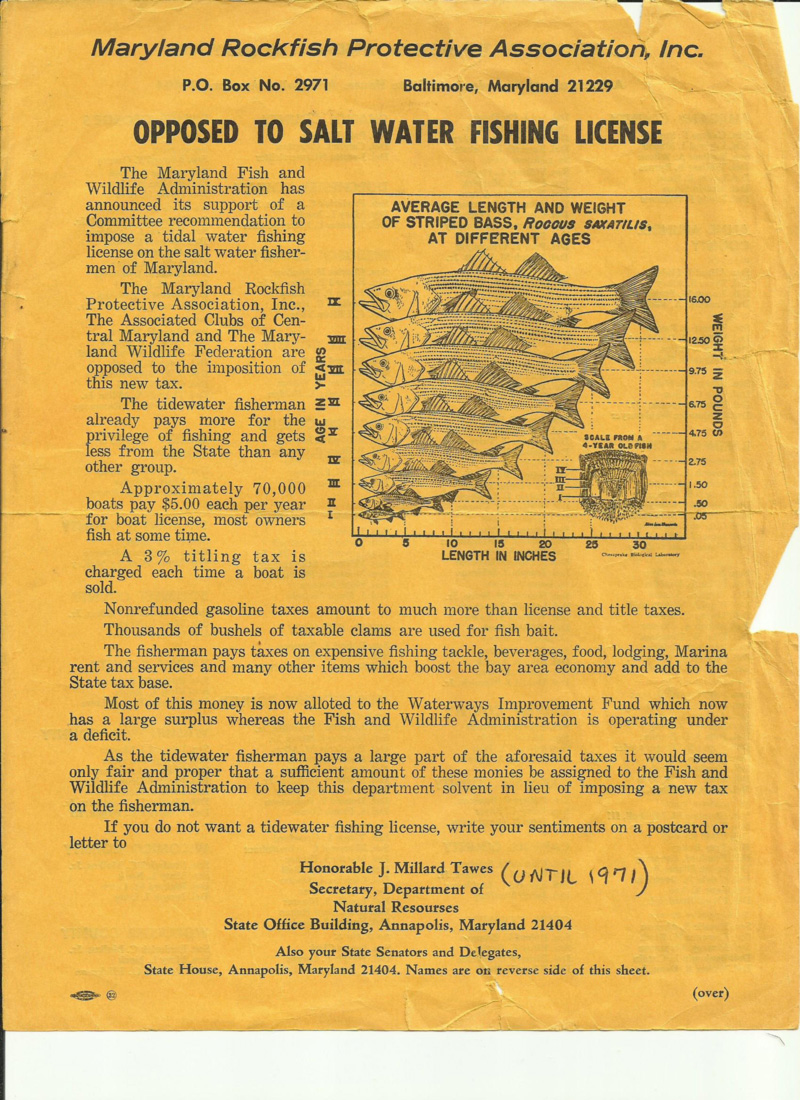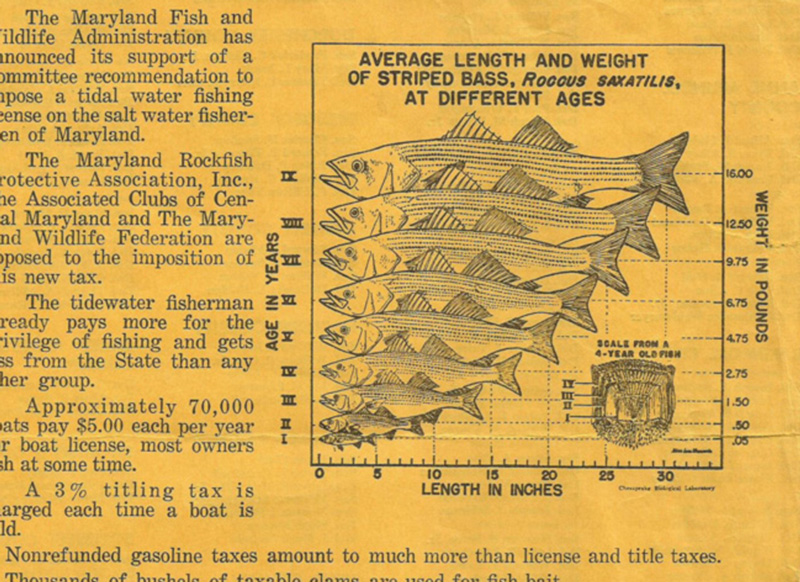It’s funny how your mind can play tricks on you but memorabilia can set the record straight, and the other day during an encouraging drop in temperature I was crawling around in the attic looking for my bag of long-neglected ice fishing gear, when I found an old shoebox full of photos. I glanced at a few of the ancient pics inside before finding the snapshot of one of the most memorable catches of my life, a 14-pound, 10-ounce sea trout. There it was on glossy paper, held up by a wildly-grinning 12-year-old me in braces. Then I made the mistake of flipping the picture over, and reading the unfortunate print on the back: “1980, Gum Thickets, on soft crab. 10 pounds 14 ounces.”
Yikes! My 14/10 was actually a 10/14? Oh well. At least I still have the fond and clear memories of the 58-inch striper I never measured and a 25-pound bluefish that didn’t get weighed. Those, fortunately, weren’t evidenced on film. Recently, however, a FishTalk reader sent me a note along with some memorabilia that provided some interesting evidence of the state of the Bay.

Dear Lenny,
As an avid reader of your magazine, books, weekly fishing reports, and fan of your Thursday podcasts, I want to thank you for bringing so much useful information my way. I have attached a copy of an old document from my fishing files circa 1971 (maybe a few years before). As you can see near the bottom, the DNR secretary at the time was J. Millard Tawes, from Crisfield, who served as our governor prior to this. The purpose was obviously to oppose a saltwater fishing license in Maryland, however, it is the chart on striped bass that you may find interesting. Over the last 10 years or so I have measured many of the fish caught in the area within five miles of the bay bridge, and they consistently average just two-thirds of the weight listed for any particular length on the chart. I know you have written and spoken on the subject many times, and thought this historical document might be of personal interest.
Warm Regards,
Allan S.
Personal interest, indeed. If you zoom in tight, the lettering at the bottom of the table reads “Chesapeake Biological Laboratory,” (CBL still exists today as part of the University of Maryland Center for Environmental Studies) so this would seem to have been produced by a reputable scientific source of the time period. And it puts a 21-inch fish at 4.75 pounds. A 25-incher, at 9.75 pounds. Interestingly, if you Google around a bit you can find plenty of length/weight tables that reflect similar numbers.
I can’t say that I weigh the 21- or 25-inch rockfish that I catch these days with any regularity. In fact, I took my scale off of the boat several years ago after it showed my must-be-over-50-pound cobia was 48.9 pounds. It now rests in a closet, bearing the moniker “Dream Crusher.” But I’m thinking it’ll have to dig it out an put it back on the boat. Because I don’t know about you, but it seems to me like Allan’s findings are a lot closer to modern reality than that 50-year-old chart. And if he’s right, it’s not just my memory that needs to be set straight.
For those of you with eyes like mine, here's a blow-up of the chart:
